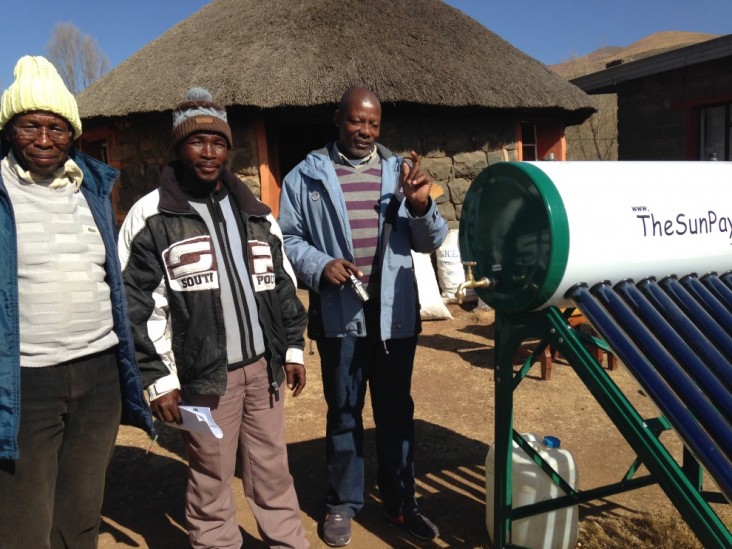
Sept. 2014—As the sun dwindles and nightfall approaches, a harsh reality creeps in. The temperature has dropped to below zero Celsius. The chill is becoming unbearable. Around the dry but beautiful mountainous landscape, only a few spots of light can be seen. Electricity is a luxury that most here simply cannot afford.
This is the life of a rural population of approximately 3,000 (550 households) in the Muela and HaLejone settlements of the Lesotho Highlands. For these communities, a solar geyser—or tank—can make a difference between using the sun to heat water or walking several kilometers to chop down rapidly declining forest resources.
Muela and HaLejone, each consisting of about eight sub-villages, are two of the four pilot areas for a USAID-funded climate change adaptation project in the Lesotho Highlands. For these communities, climate change is already a part of life, and is bringing about a new set of weather patterns and extremes that are well beyond what the local communities are capable of dealing with.
The Institute of Natural Resources (INR), in partnership with USAID, is supporting these local communities and the Government of Lesotho to strengthen their ability to respond to the negative impacts of climate change. Through more sustainable environmental policies at the government level, and practices at the household level, INR is helping rebuild or enhance the social and ecological resilience among these rural communities.
The project, which runs from October 2010 to March 2015, has created “sustainability commons” where solar technologies are showcased, and INR staff provides demonstrations on the operation of these technologies to community members. The goal is to encourage adoption of solar technologies and more efficient wood cookers within local communities. This will increase the capacity of communities to adapt to the effects of climate change and conserve the environment by reducing unsustainable tree harvesting for cooking and other domestic purposes.
Interest in solar technology has risen rapidly as a result of the INR project. In the HaLejone area, approximately 25 percent of the 550 households have requested assistance to purchase wood efficient cookers, and another 44 households have shown keen interest in purchasing the more costly solar geyser. Acknowledging the limited financial capacity of these communities, the project is currently exploring financial mechanisms to increase the capacity of communities to purchase solar technology equipment. The project is also exploring markets for less costly and easily available solar equipment.
This practical approach at the household level has great potential for continent-wide replication and even greater potential to significantly improve the quality of life of people like Peter Sepali, who lives in HaLejone and, before this project, had neither heard of nor seen a solar geyser or solar light. Sepali purchased a solar light in early 2014 and says he hopes to purchase a solar geyser one day.
“Having a solar light in our home has made a great difference in our lives—not just for the light, but also because it can be used as a cell phone charger,” said Sepali.
A change in mindset and gradual adoption of more efficient wood cookers and solar technology can help conserve the natural environment and result in the much-needed positive impact on the already degraded mountainous landscape of the Lesotho Highlands. For these communities where electricity is a luxury, a solar light also saves money over the costly, hazard-prone paraffin traditionally used for lighting.
LINKS
Follow @USAID_SAfrica, on Facebook, on Flickr, on YouTube







Comment
Make a general inquiry or suggest an improvement.